Home>Interior Design>How To Learn About Interior Design
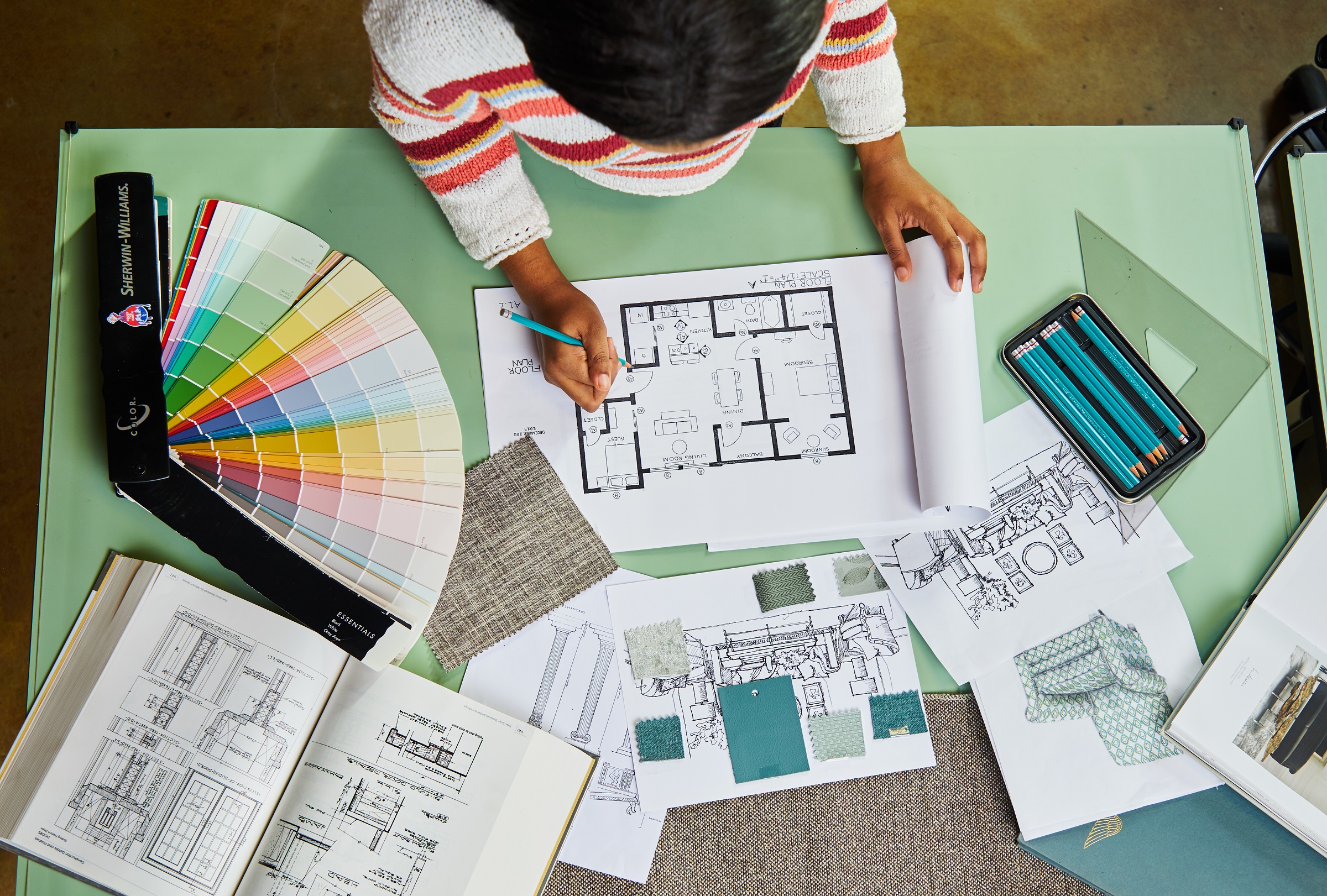

Interior Design
How To Learn About Interior Design
Modified: March 25, 2024
Discover the secrets of interior design with our comprehensive guide. Learn how to master the art of interior design and transform any space into a stunning masterpiece.
(Many of the links in this article redirect to a specific reviewed product. Your purchase of these products through affiliate links helps to generate commission for Storables.com, at no extra cost. Learn more)
Introduction
Interior design is an art form that combines creativity, functionality, and aesthetics to transform a space into something beautiful and functional. It goes beyond just choosing the right colors and furniture; it involves a deep understanding of space planning, design principles, and attention to detail. Whether you’re looking to decorate your own home or embark on a career in interior design, learning about the fundamentals of this field is essential.
In this article, we will explore how to learn about interior design, providing you with valuable insights and guidance to get started in this exciting and rewarding field. From understanding the basics and exploring different design styles to learning about color schemes, furniture placement, and the use of decorative elements, we will cover a comprehensive range of topics to help you develop your skills and knowledge.
Before we delve into the specifics, it’s important to note that interior design is a multidisciplinary field that draws from various disciplines such as architecture, psychology, and art. It involves not only the visual aspects of design but also the practical considerations that make a space functional and comfortable.
Whether you’re starting from scratch or looking to enhance your existing knowledge, learning about interior design can be an exciting and fulfilling journey. It provides you with the tools and techniques to transform ordinary spaces into extraordinary ones, reflecting your personal style and meeting the needs of the occupants.
So, let’s get started on this immersive exploration of interior design. By the end of this article, you will have a solid foundation and a wealth of knowledge to help you embark on your interior design journey.
Key Takeaways:
- Understanding the basics of interior design, exploring different design styles, and learning about color schemes and furniture placement are essential for creating beautiful and functional spaces that reflect personal style and meet occupants’ needs.
- Incorporating sustainability, utilizing tools and software, and mastering budgeting and project management skills are crucial for successful interior design projects, ensuring efficiency, client satisfaction, and a sustainable future.
Read more: How To Learn About Hand Tools
Understanding the Basics of Interior Design
Before diving into the world of interior design, it’s crucial to grasp the fundamental principles that govern this creative discipline. Here are some essential concepts that will lay the groundwork for your interior design education:
- Functionality: Interior design should not only be aesthetically pleasing but also practical and functional. It involves analyzing how a space will be used and ensuring that it serves its intended purpose effectively. Understanding traffic flow, ergonomics, and usability are key components of functional design.
- Space planning: Space planning is the art of arranging furniture, fixtures, and other elements within a space to optimize its functionality and flow. It involves considering factors such as the size and shape of the room, the desired activities within it, and the needs and preferences of the occupants.
- Scale and proportion: Achieving balance and harmony in design relies heavily on understanding scale and proportion. The size of furniture, the placement of objects, and the overall balance of visual elements all contribute to the perception of a space. Striking the right balance ensures a harmonious and visually appealing design.
- Color theory: Colors can significantly impact the mood and atmosphere of a space. Understanding color theory, including color schemes, complementary colors, and the psychology of color, allows designers to create the desired ambiance and evoke specific emotions.
- Materials and textures: The choice of materials and textures adds depth and character to an interior. Understanding the properties of different materials and being able to combine them effectively can transform a space from ordinary to extraordinary.
- Lighting: Lighting plays a crucial role in interior design, both in terms of functionality and aesthetics. Learning about different lighting techniques, such as ambient, task, and accent lighting, as well as understanding natural and artificial light sources, can help create the desired ambiance and enhance the visual appeal of a space.
- Balance and symmetry: Achieving balance and symmetry in design helps create a sense of harmony and order. This can be achieved by distributing visual elements evenly, creating focal points, and using symmetry in furniture placement and decor.
By understanding these key concepts, you will be equipped with a solid foundation in the basics of interior design. As you continue to explore and learn, you can build upon these principles to create stunning and functional interiors that reflect your personal style and meet the needs and desires of the occupants.
Exploring Different Design Styles
Interior design encompasses a wide range of design styles, each with its own unique characteristics and aesthetic elements. Exploring these different styles can help you refine your design preferences and understand how to create cohesive and visually appealing spaces. Here are a few popular design styles to consider:
- Traditional: Traditional design is known for its timeless appeal and classic elegance. It incorporates rich, dark wood furnishings, intricate detailing, and a sense of symmetry. Traditional spaces often feature formal layouts, plush fabrics, and an overall sense of sophistication.
- Modern: Modern design embraces simplicity, clean lines, and minimalism. It emphasizes open spaces, plenty of natural light, and the use of sleek materials such as glass, steel, and concrete. Modern spaces often showcase neutral color palettes, bold artwork, and furniture with clean, geometric shapes.
- Scandinavian: Scandinavian design is characterized by its simplicity, functionality, and emphasis on natural materials. It features light, neutral color palettes, clean lines, and a sense of warmth and coziness. Scandinavian spaces often incorporate organic elements, such as wood and plants, to create a harmonious and inviting atmosphere.
- Industrial: Industrial design draws inspiration from factories and warehouses, showcasing raw and unfinished elements. Exposed brick walls, ductwork, and concrete floors are common in industrial style interiors. Furniture and decor often feature utilitarian designs and a mix of metal, wood, and leather.
- Mid-Century Modern: Mid-century modern design emerged in the mid-20th century and continues to be popular today. It is characterized by its sleek lines, organic shapes, and the use of both natural and man-made materials. Mid-century modern spaces often feature minimalist furnishings, vibrant colors, and retro-inspired decor.
- Coastal: Coastal design evokes a relaxed and breezy feel, inspired by beachside living. It often incorporates light and airy color palettes, natural textures, and a mix of vintage and nautical elements. Coastal spaces aim to create a serene and tranquil environment that reflects the beauty of the seaside.
- Eclectic: Eclectic design is all about mixing and matching different styles, eras, and patterns to create a unique and personalized space. It allows for artistic freedom and self-expression, combining elements from various design styles to create a cohesive and visually stimulating composition.
Exploring different design styles not only expands your design knowledge but also helps you discover your personal aesthetic preferences. You can take inspiration from these styles and incorporate elements that resonate with you into your own interior design projects. Remember, there are no right or wrong choices when it comes to design styles – it’s all about creating spaces that reflect your personality and meet the needs of the occupants.
Learning about Color Schemes and Palettes
Color is a powerful design tool that can greatly impact the mood, atmosphere, and overall visual appeal of a space. Understanding color theory and learning about different color schemes and palettes is essential for creating well-balanced and visually pleasing interiors. Here are some key concepts to consider:
Color Theory:
Color theory is the study of how colors interact and influence each other. It involves understanding important terms such as hue (the actual color), value (lightness or darkness of a color), and saturation (the intensity or purity of a color). Color theory explores the emotional and psychological effects of different colors and how they can be used to create specific moods within a space.
Color Schemes:
Color schemes refer to the combinations of colors used in a design. Here are a few popular color schemes:
- Monochromatic: This color scheme uses variations of the same color. It creates a harmonious and soothing effect, with shades, tints, and tones providing depth and interest.
- Analogous: Analogous color schemes involve using colors that are adjacent to each other on the color wheel. It creates a sense of unity and cohesiveness while allowing for subtle variations in hue.
- Complementary: Complementary colors are located opposite each other on the color wheel. Pairing complementary colors can create a vibrant and visually striking contrast.
- Triadic: Triadic color schemes use three colors that are equidistant from each other on the color wheel. This scheme provides a balanced and energetic look, as the colors are evenly distributed.
- Split-Complementary: Split-complementary color schemes involve choosing a base color and pairing it with the two colors adjacent to its complementary color. It provides a contrasting yet harmonious combination.
Color Psychology:
Colors have the power to evoke specific emotions and create desired atmospheres. For example, warm colors like red, orange, and yellow are associated with energy, warmth, and excitement. Cool colors like blue, green, and purple, on the other hand, are often associated with calmness, serenity, and relaxation. Understanding color psychology can help you select the appropriate color schemes based on the purpose and function of a space.
Choosing the Right Color Palette:
When selecting a color palette for an interior space, consider factors such as the size of the room, the amount of natural light, and the desired ambiance. Lighter colors can make a space feel larger and more open, while darker colors can create a cozy and intimate atmosphere. Pay attention to the relationship between the wall color, furniture, and decor elements to ensure a harmonious and balanced design.
By learning about color theory, color schemes, and psychology, you can confidently select and combine colors to create visually stunning and emotionally engaging interiors. Experiment with different combinations, consider the specific needs of each space, and let your creativity guide you in finding the perfect color palette for your design projects.
Furniture and Space Planning
One of the key aspects of interior design is furniture and space planning. It involves selecting the right furniture pieces and arranging them in a way that maximizes functionality and visual appeal. Here are some essential considerations when it comes to furniture and space planning:
Assessing the Space:
Before choosing furniture, it’s important to assess the available space. Measure the dimensions of the room, taking note of any architectural features, windows, doors, and electrical outlets. This will help you determine the appropriate size and scale of furniture that can comfortably fit in the space.
Defining the Purpose:
Consider the function and purpose of the room. Is it a living room for entertaining guests, a bedroom for relaxation, or a home office for productivity? Understanding the primary use of the space will guide your furniture selection and arrangement. For example, a living room might require comfortable seating options and a coffee table, while a home office would need a desk and storage solutions.
Creating Traffic Flow:
Ensure that there is a clear and logical flow of movement within the space. Arrange furniture in a way that allows for easy navigation and doesn’t obstruct pathways. Consider how people will move around the room and make adjustments as needed to optimize traffic flow.
Choosing Furniture:
When selecting furniture, consider both style and functionality. Choose pieces that align with the overall design aesthetic of the room while also serving their intended purpose. Take into account the scale of the furniture in relation to the room size. Avoid overcrowding a space with too many pieces, and ensure that each piece has a designated function.
Arranging Furniture:
Once you’ve chosen the furniture pieces, it’s time to arrange them in a way that maximizes both functionality and visual appeal. Start by creating a focal point, such as a fireplace, a TV, or a stunning artwork. Arrange furniture around this focal point, taking care to create balance and symmetry in the arrangement. Group seating pieces to encourage conversation and create cozy conversation areas.
Considering Ergonomics:
Ergonomics is a crucial consideration in furniture and space planning. It involves designing spaces that are comfortable, safe, and efficient for their intended use. Ensure that seating options are ergonomic and provide proper support for the body, and consider the height and positioning of tables and desks to promote good posture.
Additional Space Planning Tips:
– Keep in mind the need for storage when planning a room. Consider incorporating storage solutions such as cabinets, shelves, or hidden storage compartments.
– Make use of vertical space by incorporating tall bookcases or wall-mounted shelves to maximize storage without taking up valuable floor space.
– Consider the placement of electrical outlets and ensure they are conveniently located for easy access to power sources.
By carefully considering furniture choices and implementing strategic space planning, you can create functional, well-organized, and visually appealing interiors that optimize the use of space and enhance the overall design aesthetic.
Read more: When To Worry About Cracks In Interior Walls
Selecting and Arranging Decorative Elements
Decorative elements are the finishing touches that bring personality and style to an interior space. They can include items such as artwork, accessories, textiles, and plants. Here are some tips for selecting and arranging decorative elements:
Reflecting Your Style:
When selecting decorative elements, choose pieces that reflect your personal style and enhance the overall design concept of the space. Consider the color palette, theme, and mood of the room, and look for decorative items that complement and enhance these elements.
Creating Focal Points:
Decorative elements can be used to create focal points within a room. A large piece of artwork, an eye-catching sculpture, or a vibrant rug can serve as a focal point that draws attention and anchors the design. Use focal points strategically to add visual interest and create a sense of balance within the space.
Adding Texture and Contrast:
Texture plays a crucial role in interior design, as it adds depth and visual interest to a space. Consider incorporating different textures through the use of materials such as wood, metal, glass, fabric, and stone. Combining contrasting textures can create a dynamic and visually appealing composition.
Layering Textiles:
Textiles such as curtains, rugs, throw pillows, and blankets can add warmth, softness, and visual richness to a space. Play with different patterns, colors, and textures to create a layered and inviting look. Consider the scale and proportion of the textiles in relation to the furniture and overall space.
Balancing Scale and Proportion:
When arranging decorative elements, pay attention to scale and proportion. Ensure that the size of the decorative items is in harmony with the furniture and the overall dimensions of the room. Avoid overcrowding a space with too many small items or overwhelming it with oversized pieces.
Creating Visual Harmony:
Aim for visual harmony by arranging decorative items in a way that creates balance and symmetry. Consider the arrangement’s visual weight, spacing, and height variations. Group items together to create a cohesive composition, or use the principle of odd numbers for a more visually appealing arrangement.
Considering Lighting:
The lighting in a room can greatly enhance the impact of decorative elements. Ensure that lighting, whether natural or artificial, is appropriately directed to highlight key decorative items and create ambiance. Consider using accent lighting such as spotlights or wall sconces to highlight artwork or focal points.
Reflecting Seasonal Changes:
Decorative elements can also be seasonal, allowing you to update and refresh the look of a space throughout the year. Consider incorporating seasonal colors, textures, and motifs in your decorative choices to reflect the changing seasons and create a dynamic and engaging atmosphere.
By carefully selecting and thoughtfully arranging decorative elements, you can add personality, texture, and visual interest to your interior spaces. Balancing scale, creating focal points, and considering the overall harmony and theme of the room will help you create a visually stunning and cohesive design.
Incorporating Lighting Techniques
Lighting plays a crucial role in interior design, as it not only serves a functional purpose but also enhances the mood, ambiance, and overall visual appeal of a space. Incorporating different lighting techniques can transform an ordinary room into a well-lit and visually stunning environment. Here are some key lighting techniques to consider:
Ambient Lighting:
Ambient lighting, also known as general lighting, provides overall illumination to a space. It serves as the foundation for lighting design and ensures that a room is adequately lit in a uniform manner. Common sources of ambient lighting include overhead fixtures, recessed lighting, and chandeliers. The goal is to achieve a balanced distribution of light throughout the room, creating a comfortable and well-lit atmosphere.
Task Lighting:
Task lighting is focused lighting that illuminates specific areas or tasks in a room. It provides concentrated light for activities such as reading, cooking, or working at a desk. Task lighting can be achieved through desk lamps, reading lights, pendant lights, or under-cabinet lighting in the kitchen. The goal is to ensure that the task at hand is well-illuminated, reducing eye strain and increasing productivity.
Accent Lighting:
Accent lighting is used to highlight specific focal points or architectural features within a room. It adds depth, drama, and visual interest by creating contrast and drawing attention to particular objects or areas. Accent lighting can be achieved through the use of track lighting, spotlights, wall sconces, or picture lights. It is particularly effective in showcasing artwork, sculptures, or architectural details.
Natural Lighting:
Natural light is a valuable and desirable element in interior design. It provides a sense of connection to the outside world, enhances the perception of space, and positively affects mood and well-being. To maximize natural light, consider the orientation and placement of windows, use light-colored or sheer window coverings, and strategically place mirrors to reflect and amplify the natural light. Natural lighting should be considered when planning the layout and arrangement of furniture to make the most of the available light.
Layered Lighting:
A well-designed lighting plan often incorporates a combination of ambient, task, and accent lighting to create a layered effect. Layered lighting brings depth and flexibility to a space, allowing for different moods and levels of illumination. By incorporating multiple light sources and controls, you can adjust the lighting according to specific needs and activities throughout the day.
Dimmers and Controls:
Consider incorporating dimmer switches and lighting controls to customize the intensity of light in a room. Dimmers allow you to adjust the level of lighting to suit various activities and moods. They also provide energy efficiency by reducing the amount of electricity used for lighting.
Color Temperature:
Color temperature refers to the warmth or coolness of light. Different light sources have varying color temperatures, ranging from warm white (yellowish) to cool white (bluish). Understand how different color temperatures can affect the ambiance and atmosphere of a space. For example, warmer color temperatures are often used in spaces for relaxation and coziness, while cooler color temperatures are suitable for spaces that require concentration and focus.
By incorporating various lighting techniques and considering factors such as ambient lighting, task lighting, accent lighting, natural lighting, layered lighting, and controls, you can create a well-lit and visually captivating interior space. Lighting design should be approached thoughtfully, taking into account the specific needs and functions of each area, as well as the desired aesthetic and mood you wish to achieve.
Understanding Textures and Fabrics
Textures and fabrics play a significant role in interior design, adding depth, visual interest, and tactile appeal to a space. They can transform a room from bland and uninspiring to rich and inviting. Understanding different textures and fabrics allows you to create dynamic and visually stunning interiors. Here are key considerations when it comes to textures and fabrics:
Texture:
Texture refers to the perceived surface quality of an object. It can be rough, smooth, soft, hard, glossy, or matte. Incorporating a variety of textures adds visual interest and creates a multi-dimensional feel within a space.
Contrast and Balance:
When working with textures, consider creating contrast and balance. Pairing smooth textures with rough ones, or shiny surfaces with matte finishes, creates a visually appealing dynamic. Strive for a balanced distribution of textures throughout the room to achieve harmony within the overall design.
Mixing Textures:
Experiment with mixing different textures to create a rich and layered look. Combine materials such as wood, metal, glass, fabric, stone, and leather to create a visually stimulating and diverse design. Consider the scale of each texture in relation to the size of the space and the existing elements within it.
Fabric Selection:
When selecting fabrics, take into consideration both aesthetics and functionality. Consider the durability, cleaning requirements, and maintenance of the fabric. Determine the purpose of the space and select fabrics accordingly – for example, choosing durable fabrics for high-traffic areas or stain-resistant fabrics for homes with children or pets.
Color and Pattern:
Textures and fabrics can also contribute to the color and pattern scheme of a room. Consider the color palette and overall design concept. Opt for fabrics that complement or enhance the existing colors and patterns within the space. Bold patterns can make a statement, while subtle patterns or solid colors can provide a sense of calm and balance.
Bolstering Comfort:
Soft and cozy textures, such as plush rugs, velvet upholstery, or faux fur throws, can enhance the comfort and coziness of a space. Pay attention to the tactile qualities of the fabrics, ensuring they feel pleasant to the touch and create a welcoming environment.
Considering Acoustics:
Texture can also have an impact on acoustics within a room. Softer and more textured surfaces can help absorb sound and reduce echo, creating a more acoustically pleasing space. Consider this factor when selecting fabric-based elements such as curtains, upholstery, or wall coverings.
Layering and Accessories:
Textiles and fabrics can be layered to enhance the visual interest of a room. Layering curtains, rugs, throw pillows, and blankets adds depth and warmth. Additionally, incorporating accessories such as cushions, drapes, or wall hangings made from different fabrics and textures can elevate the design and make a striking statement.
Incorporating various textures and fabrics into your interior design allows you to create a visually stimulating and inviting space. By considering contrast, balance, durability, color, pattern, and comfort, you can strike the perfect mix of textures and fabrics to enhance the overall aesthetic and ambiance of your design.
Tip: Start by researching the basic principles of interior design, such as color theory, space planning, and furniture styles. Look for online courses, books, and tutorials to deepen your understanding. Practice by redesigning your own space and seeking feedback from others.
Exploring Window Treatments and Flooring Options
Window treatments and flooring options are essential elements in interior design, contributing to both the aesthetics and functionality of a space. They have the power to enhance the natural light, provide privacy, and add texture and color to a room. Let’s explore some considerations when it comes to window treatments and flooring:
Window Treatments:
– Curtains and Drapes: Curtains and drapes are versatile window treatments that come in a variety of fabrics, patterns, and colors. They can add softness and elegance to a space, as well as control light and privacy. Consider the weight and opacity of the fabric, and how it aligns with the overall design style and desired functionality of the room.
– Blinds and Shades: Blinds and shades offer a more structured and tailored look. They come in different materials such as wood, metal, or fabric, and can be adjusted to control light and privacy. Consider the level of light filtering or blocking required, as well as the style and material that best complement the room’s aesthetic.
– Shutters: Shutters provide a classic and timeless look. They can be made of wood, vinyl, or composite materials and come in various styles, including plantation shutters and café-style shutters. Shutters offer versatility, allowing for precise control of light and privacy while adding architectural appeal to the windows.
– Window Films: Window films are a modern and popular solution for privacy and light control. They come in a variety of patterns, frosted or stained glass designs, and can be applied directly to the glass surface. Window films allow for natural light to filter through while providing privacy and adding a decorative element to the windows.
Flooring Options:
– Hardwood Flooring: Hardwood flooring is a classic and timeless option that adds warmth and natural beauty to a space. It comes in different wood species and finishes, and can be stained or left in its natural state. Hardwood is durable and can be refinished, making it a long-lasting and versatile choice for many interior styles.
– Laminate Flooring: Laminate flooring offers the look of natural wood or stone at a more affordable price point. It consists of a synthetic material with a printed layer on top that replicates the desired texture and pattern. Laminate is durable, easy to clean, and comes in a wide range of styles and finishes.
– Tile Flooring: Tile flooring is popular in areas such as kitchens and bathrooms due to its water-resistant properties. It comes in a variety of materials, including ceramic, porcelain, and natural stone, with endless design possibilities. Tile flooring is durable and easy to maintain, offering a sleek and elegant look to any space.
– Carpeting: Carpeting adds warmth, comfort, and noise reduction to a room. It comes in various pile heights, textures, and colors, allowing for customization to fit different design styles and preferences. Consider the level of foot traffic and the desired plushness when selecting carpet for specific areas in the home.
– Vinyl Flooring: Vinyl flooring has come a long way in terms of design and durability. It is an affordable and low-maintenance option that can replicate the look of natural materials such as wood, stone, or tile. Vinyl is resistant to water and stains, making it suitable for kitchens, bathrooms, and other high-moisture areas.
When selecting window treatments and flooring options, consider the overall aesthetic, functionality, and durability required for each space. By carefully choosing window treatments that control light and privacy, and flooring materials that fit your style and lifestyle, you can create a visually appealing and functional environment that suits your needs and preferences.
Read more: How To Learn To Garden
Utilizing Accessories and Artwork
Accessories and artwork are the finishing touches that bring personality, style, and a sense of completion to an interior space. They have the power to transform a room by adding texture, color, and visual interest. Here are some considerations for utilizing accessories and artwork effectively:
Identifying Points of Focus:
Accessories and artwork can act as focal points within a room, drawing attention and creating a visual anchor. Identify key areas or features that you want to highlight, such as a fireplace, a statement wall, or an architectural element. Place accessories and artwork strategically in these areas to enhance their impact.
Creating Visual Balance:
Balance is key when it comes to utilizing accessories and artwork. Consider the scale, proportion, and placement of your items. Avoid cluttering a space with too many accessories or artwork, as this can overwhelm the eye. Instead, opt for a carefully curated collection that creates a sense of visual harmony and allows each piece to shine.
Varying Heights and Textures:
Experiment with different heights and textures when arranging accessories. Mixing tall and short items, as well as incorporating items with varying textures, adds visual interest and creates dimension within a space. This could include vases, candles, sculptures, or plants.
Color Coordination:
Consider the color palette of your space and choose accessories and artwork that coordinate or complement it. By selecting items that echo the hues or tones found in the room, you can create a cohesive and harmonious look. Alternatively, you can use accessories and artwork that provide a pop of contrasting color to create visual impact.
Personalization and Storytelling:
Utilize accessories and artwork to reflect your personality and tell a story. Include items that have sentimental value or represent your interests and hobbies. Personalized accessories and artwork add a unique touch and create a space that is truly your own.
Layering and Grouping:
Layering and grouping accessories can create a visually pleasing composition. Combine items of different sizes, shapes, and heights to add depth and visual interest. Group related items together, such as a collection of pottery or a set of framed photographs, to create a cohesive arrangement.
Highlighting Artwork:
Showcase artwork by giving it proper emphasis and attention. Hang artwork at eye level, ensuring it is centered and placed at an appropriate distance from furniture or architectural features. Use lighting effectively to illuminate and highlight the artwork, enhancing its visual impact.
Rotating and Updating:
Don’t be afraid to change and update your accessories and artwork periodically. This can breathe new life into a space and keep it fresh and interesting. Rotate artwork, swap out accessories, or introduce new pieces to reflect different seasons, moods, or design trends.
Utilizing accessories and artwork effectively allows you to inject personality, create visual interest, and elevate the overall design of a space. By considering focal points, balance, color coordination, personalization, layering, and rotation, you can create a visually captivating and personalized environment that reflects your style and adds a sense of completion to your interior design.
Understanding Interior Design Principles
Interior design principles are the guidelines and concepts that form the foundation of creating well-designed and aesthetically pleasing spaces. They help ensure that the design is harmonious, functional, and visually appealing. Here are some important interior design principles to consider:
Balance:
Balance is the distribution of visual weight within a space. It can be achieved through symmetrical or asymmetrical arrangements. Symmetrical balance involves creating an equilibrium by placing identical objects or elements on both sides of a central axis. Asymmetrical balance, on the other hand, involves arranging different objects or elements in a way that creates a sense of balance through visual weight.
Proportion and Scale:
Proportion and scale refer to the relationship between objects, elements, and the space they occupy. It involves considering the size, height, and volume of different elements within a room to ensure harmony and visual hierarchy. Choosing furniture, fixtures, and decorative items that are appropriately scaled to the size of the space will create a balanced and visually pleasing composition.
Unity and Harmony:
Unity and harmony involve creating a sense of cohesion and consistency within a space. It involves ensuring that all elements of the design relate to each other and work together harmoniously. Utilize color schemes, repetition of patterns, materials, and textures to create a unified and harmonious design that flows seamlessly throughout the space.
Emphasis and Focal Points:
Emphasis involves creating focal points within a room, drawing attention and creating visual interest. Focal points can be achieved through architectural features, artwork, furniture arrangements, or lighting. They help guide the eye and add a sense of hierarchy and drama to a space.
Rhythm and Repetition:
Rhythm and repetition involve creating a sense of movement and continuity within a space. It can be achieved through the repetition of shapes, patterns, colors, or textures. Establishing a rhythm creates a visual flow and adds interest and cohesion to the design.
Contrast:
Contrast involves the use of elements that are different from each other to create visual interest and impact. It can be achieved through the use of contrasting colors, textures, shapes, or styles. Contrast adds depth and excitement to a design, making certain elements stand out and creating a visually stimulating environment.
Functionality:
Functionality is a fundamental principle of interior design. It involves understanding the purpose and intended use of a space and ensuring that the design is optimized to meet those needs. The layout, furniture placement, and organization of the space should be practical and facilitate easy movement and functionality.
Lighting:
Lighting is a crucial aspect of interior design, both for its functionality and its ability to enhance the design aesthetic. Proper lighting design involves considering the natural and artificial light sources within a space and using different lighting techniques to create the desired ambiance and highlight key features.
Understanding and applying these interior design principles will help you create spaces that are visually pleasing, functional, and harmonious. Each principle should be considered and balanced in relation to the specific requirements and style of the space, resulting in a well-designed and cohesive environment.
Incorporating Sustainability and Eco-Friendly Elements
In today’s world, the importance of sustainability and eco-friendly design practices cannot be understated. Incorporating sustainable and eco-friendly elements in interior design not only benefits the environment but also creates healthier and more sustainable living spaces. Here are some ways to incorporate sustainability and eco-friendly elements in your interior design:
Material Selection:
Choose materials that are sustainable and have a low environmental impact. Opt for natural and renewable materials such as bamboo, cork, reclaimed wood, and recycled materials. These materials reduce the need for new resource extraction and minimize waste.
Low VOC and Non-Toxic Finishes:
Avoid paints, varnishes, and other finishes that contain harmful volatile organic compounds (VOCs). Opt for low VOC or VOC-free products that minimize air pollution and improve indoor air quality. Consider using natural and non-toxic finishes such as plant-based oils and waxes.
Energy Efficiency:
Design spaces with energy efficiency in mind. Incorporate energy-efficient lighting fixtures, use energy-efficient appliances, and consider using natural lighting through larger windows and skylights. Install programmable thermostats and utilize smart home technology to optimize energy usage.
Water Efficiency:
Choose products that promote water conservation. Install low-flow faucets, showerheads, and toilets to reduce water usage. Consider incorporating water-saving irrigation systems for gardens and landscapes. Collect and reuse rainwater for irrigation purposes whenever possible.
Sustainable Furniture and Furnishings:
When selecting furniture and furnishings, look for sustainable options. Choose pieces made from responsibly sourced or recycled materials. Consider furniture that is certified by organizations such as the Forest Stewardship Council (FSC) or made with recycled content. Look for textiles made from organic or natural fibers.
Waste Reduction and Recycling:
Implement waste reduction practices by incorporating recycling and composting systems within the design. Provide designated areas or bins for different types of waste, including recycling and organic waste. Consider the use of products with minimal packaging and encourage clients to recycle or repurpose items during the design and construction process.
Indoor Air Quality:
Pay attention to indoor air quality by selecting products and materials that are low in harmful emissions. Choose carpets and flooring that are certified low VOC. Provide proper ventilation and air filtration systems to improve air circulation and filtration. Incorporate plants into the design to naturally purify the air.
Longevity and Durability:
Design with longevity and durability in mind. Choose high-quality and long-lasting materials and furniture that will stand the test of time. Well-maintained and durable designs reduce the need for frequent replacements, thus minimizing waste and resources.
Education and Awareness:
Educate yourself and your clients about sustainable design practices. Stay informed about the latest advancements in sustainable materials and technologies. Encourage your clients to embrace sustainability and make environmentally conscious choices in their everyday lives.
By incorporating sustainability and eco-friendly elements into your interior design projects, you contribute to a more sustainable future. These practices not only benefit the environment but also create healthier and more enjoyable living spaces for the occupants.
Learning about Budgeting and Project Management
Budgeting and project management are essential skills for successful interior design projects. Proper planning, organization, and financial management ensure that projects are completed within budget and on schedule. Here are some key factors to consider when it comes to budgeting and project management:
Set Clear Goals:
Before starting any interior design project, it’s essential to clearly define the goals and objectives. Understand the scope of the project, the desired outcomes, and the client’s expectations. This will guide your decision-making process and help you create a realistic budget and timeline.
Create a Detailed Budget:
Developing a detailed budget is crucial to managing project costs effectively. Outline all anticipated expenses, including materials, furniture, labor, permits, and any additional fees. Research and gather price estimates from vendors and contractors to ensure accurate budgeting. Leave some room for unexpected expenses or changes that may arise during the project.
Research and Compare Prices:
Conduct thorough research to find the best prices for materials, furniture, and labor. Obtain multiple quotes and compare prices to ensure that you are getting the best value for your budget. Consider alternative options and explore cost-saving strategies without compromising on quality.
Project Timeline and Scheduling:
Develop a realistic project timeline and schedule, considering factors such as material availability, contractor availability, and any potential delays that may arise. Break down the project into smaller tasks and assign deadlines to each. Regularly review and track progress against the schedule to ensure that the project stays on track.
Communication and Collaboration:
Effective communication and collaboration are vital to project management. Maintain open lines of communication with clients, contractors, suppliers, and other stakeholders. Regularly update them on the project’s progress, discuss any changes or challenges, and ensure that everyone is on the same page. Encourage collaboration between team members to ensure seamless coordination and problem-solving.
Vendor and Contractor Management:
If you are working with vendors and contractors, establish clear expectations and timelines. Obtain written agreements or contracts that outline the scope of work, deliverables, payment terms, and timelines. Regularly communicate with vendors and contractors to ensure that they are meeting deadlines and delivering quality work.
Proactive Problem-Solving:
Be prepared for unforeseen challenges and be proactive in finding solutions. Anticipate potential risks and develop contingency plans. Address any issues or delays promptly to minimize their impact on the project schedule and budget. Maintain a flexible mindset and be willing to adjust plans when necessary.
Regular Monitoring and Documentation:
Regularly monitor project progress and keep detailed records of all expenses, invoices, and communication. This documentation will help you stay organized, track the project’s financial status, and address any discrepancies or issues that may arise. Regularly review the budget against actual expenses to ensure that you are staying within budgetary constraints.
Client Satisfaction and Final Evaluation:
Throughout the project, prioritize client satisfaction and regularly check in with them to address their needs and preferences. Upon project completion, conduct a final evaluation with the client to assess their satisfaction and gather feedback. This feedback will help you improve your future budgeting and project management practices.
By developing strong budgeting and project management skills, you can effectively plan, execute, and complete interior design projects within budget and on time. These skills are crucial for maintaining client satisfaction, meeting project goals, and ensuring the overall success of your design endeavors.
Exploring Tools and Software for Interior Design
In today’s digital age, there are numerous tools and software available that can greatly enhance the interior design process. These tools assist with tasks such as visualizing designs, creating detailed floor plans, managing budgets, and collaborating with clients and team members. Here are some popular tools and software options for interior design:
Computer-Aided Design (CAD) Software:
CAD software is widely used in the field of interior design for creating detailed and accurate 2D and 3D floor plans, elevations, and 3D renderings. CAD software allows designers to visualize and present their ideas to clients effectively. AutoCAD, SketchUp, and Revit are some popular CAD software options utilized by interior designers.
Space Planning Software:
Space planning software provides tools for creating and arranging furniture layouts within a given space. It helps designers experiment with different layouts and visualize how furniture will fit within the room. Examples of space planning software include RoomSketcher, Planner 5D, and SmartDraw.
Color Palette and Visualization Tools:
Color palette and visualization tools assist designers in selecting and visualizing different color schemes within a space. These tools can create mood boards, experiment with different color combinations, and simulate how colors will look on walls and furniture. Well-known options include Adobe Color, Pantone Studio, and Sherwin-Williams ColorSnap.
Virtual Reality (VR) and Augmented Reality (AR) Technology:
VR and AR technologies are revolutionizing the way interior design is presented and experienced. Designers can create immersive virtual environments or overlay virtual elements on real spaces to help clients visualize and experience the designs. Tools such as IrisVR, Fuzor, and Morpholio enable designers to provide clients with a realistic sense of space and design.
Project Management and Collaboration Software:
To streamline project management and enhance collaboration with clients and team members, project management and collaboration software is essential. These tools help with task management, document sharing, communication, and timelines. Examples include Asana, Trello, Basecamp, and Slack.
Budgeting and Accounting Software:
To effectively manage project finances, budgeting and accounting software can be utilized. These tools help with tracking expenses, creating budgets, invoicing, and financial reporting. QuickBooks, FreshBooks, and Xero are popular options for managing the financial aspects of interior design projects.
Material and Product Sourcing Platforms:
Material and product sourcing platforms provide a centralized place to explore and source materials, furniture, decor, and fixtures. Interior designers can access a wide range of options, compare pricing, and request samples. Platforms such as Material Bank, Designbx, and Architonic help streamline the sourcing process.
3D Rendering and Visualization Software:
3D rendering and visualization software allows designers to create realistic and immersive visual representations of their designs. These tools help clients visualize how their space will look, understand material choices, and make informed decisions. Popular software options include V-Ray, Lumion, and 3ds Max.
As technology continues to advance, the range of tools and software available to interior designers continues to grow. By exploring and utilizing these tools, interior designers can enhance their workflow, improve communication with clients, and create stunning visual presentations that bring designs to life.
Conclusion
In conclusion, learning about interior design is a fascinating journey that involves creativity, functionality, and attention to detail. By understanding the basics of interior design, exploring different design styles, and learning about color schemes, furniture placement, and decorative elements, you can create beautiful and functional spaces that reflect your personal style and meet the needs of the occupants.
Throughout this article, we have touched upon various aspects of interior design, including the importance of incorporating textures and fabrics, selecting the right window treatments and flooring options, and utilizing accessories and artwork to add personality and visual interest. Furthermore, we have emphasized the significance of incorporating sustainability and eco-friendly elements to contribute to a more sustainable future.
Additionally, we have explored the principles of interior design, such as balance, proportion, and emphasis, which are crucial for creating visually pleasing and harmonious spaces. We have also emphasized the importance of budgeting and project management skills, ensuring that projects are completed within budget and on schedule.
Lastly, we have delved into the world of tools and software for interior design, which can greatly enhance the design process, facilitate collaboration, and visualize designs in a realistic and immersive manner. These tools offer opportunities for creativity and efficiency, enabling designers to bring their ideas to life and effectively communicate with clients and team members.
As you embark on your journey into the world of interior design, remember to always stay curious, be open to learning new techniques and concepts, and embrace your own unique style. Interior design is a dynamic and ever-evolving field, and with a strong foundation and continued learning, you can create spaces that inspire, uplift, and transform lives.
Frequently Asked Questions about How To Learn About Interior Design
Was this page helpful?
At Storables.com, we guarantee accurate and reliable information. Our content, validated by Expert Board Contributors, is crafted following stringent Editorial Policies. We're committed to providing you with well-researched, expert-backed insights for all your informational needs.
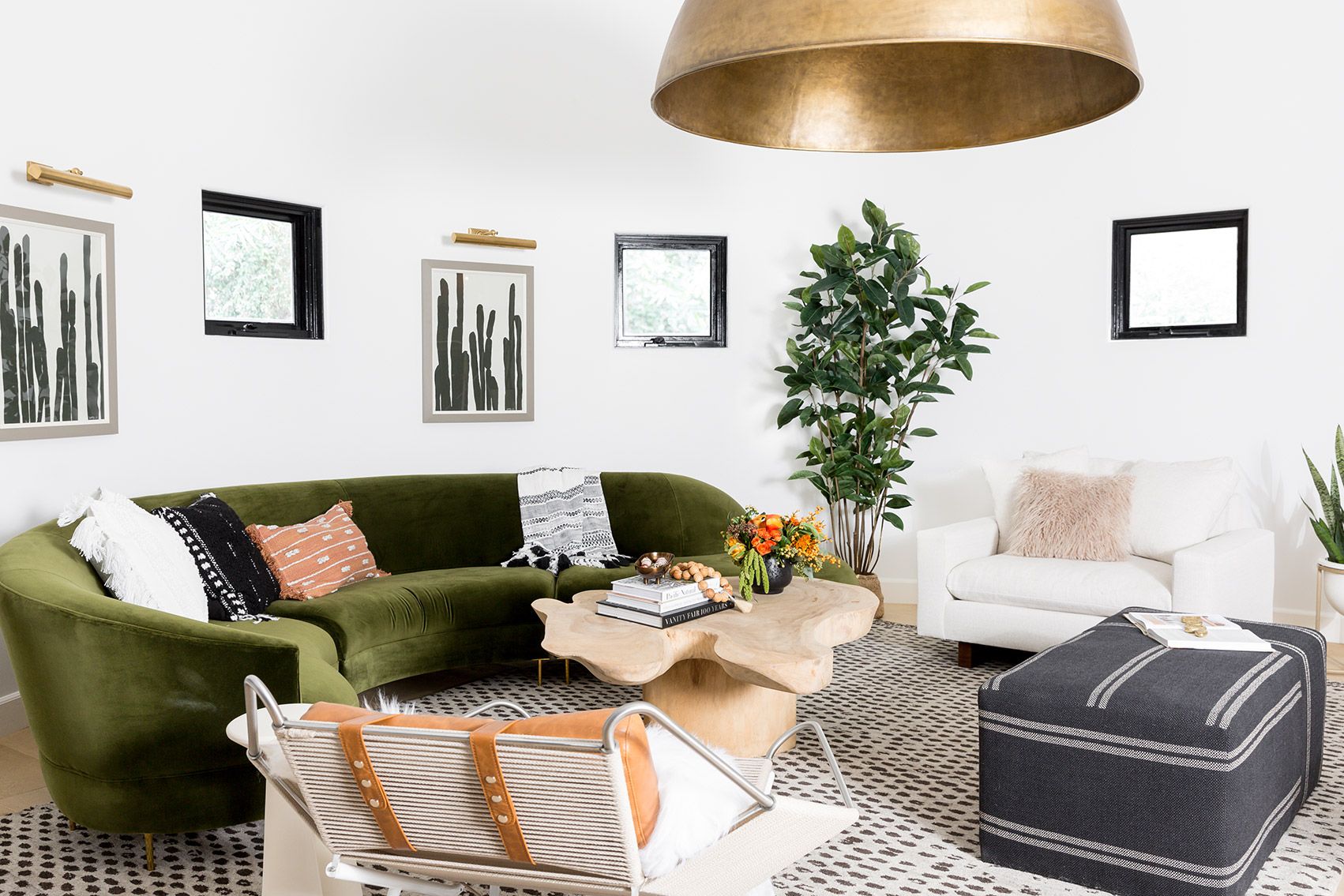
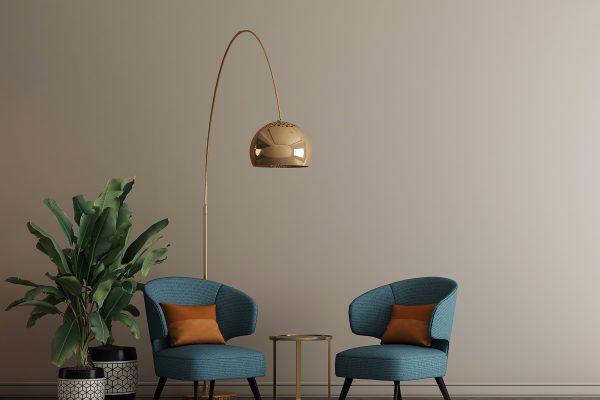

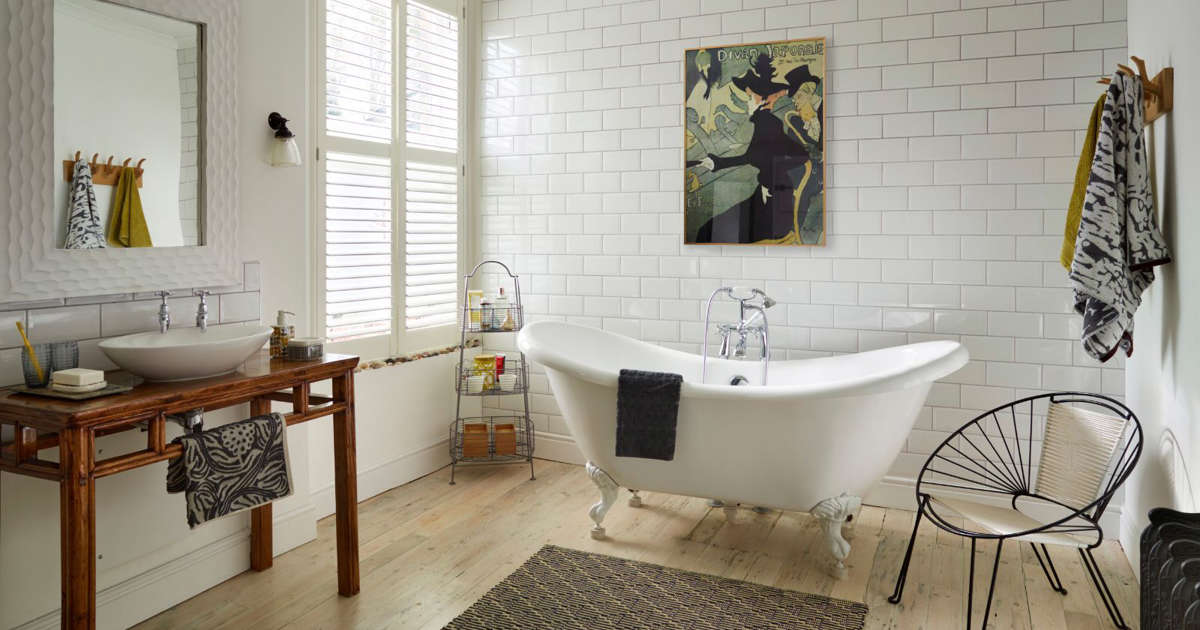
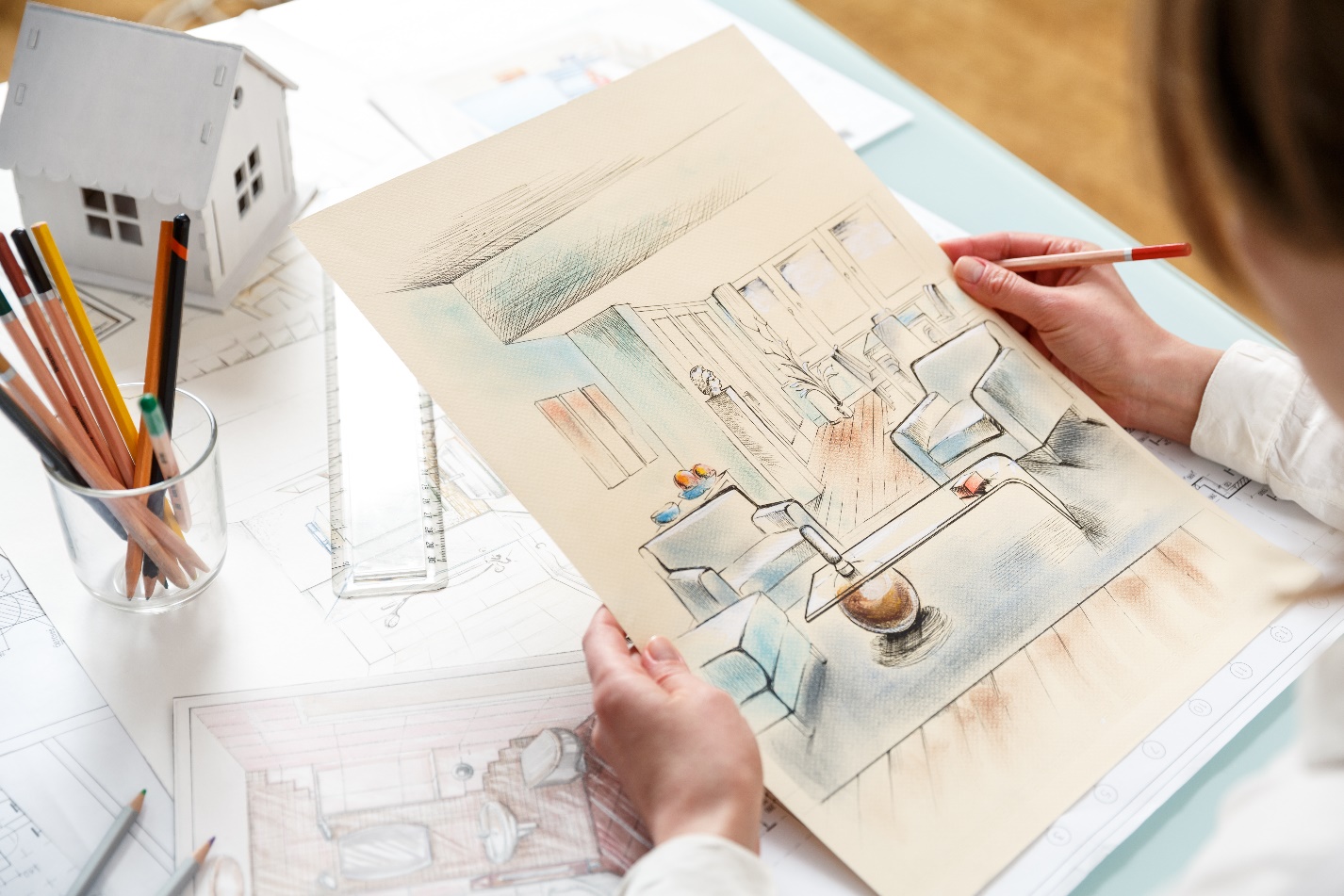
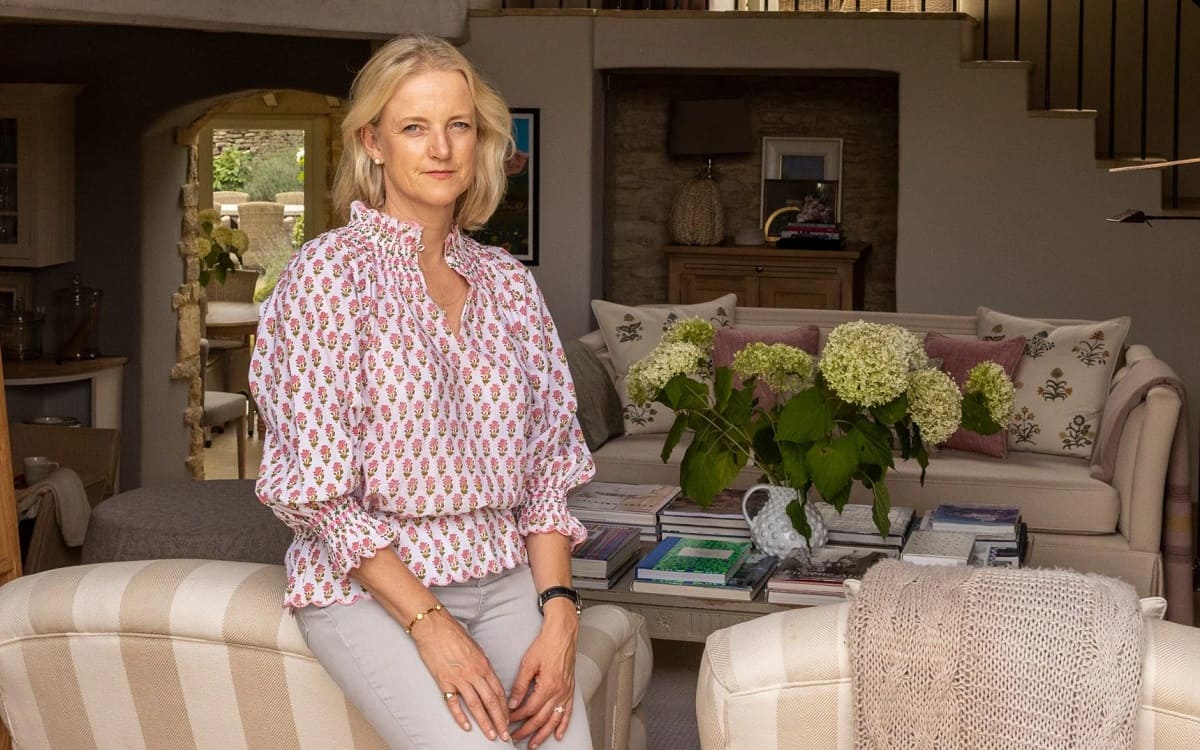
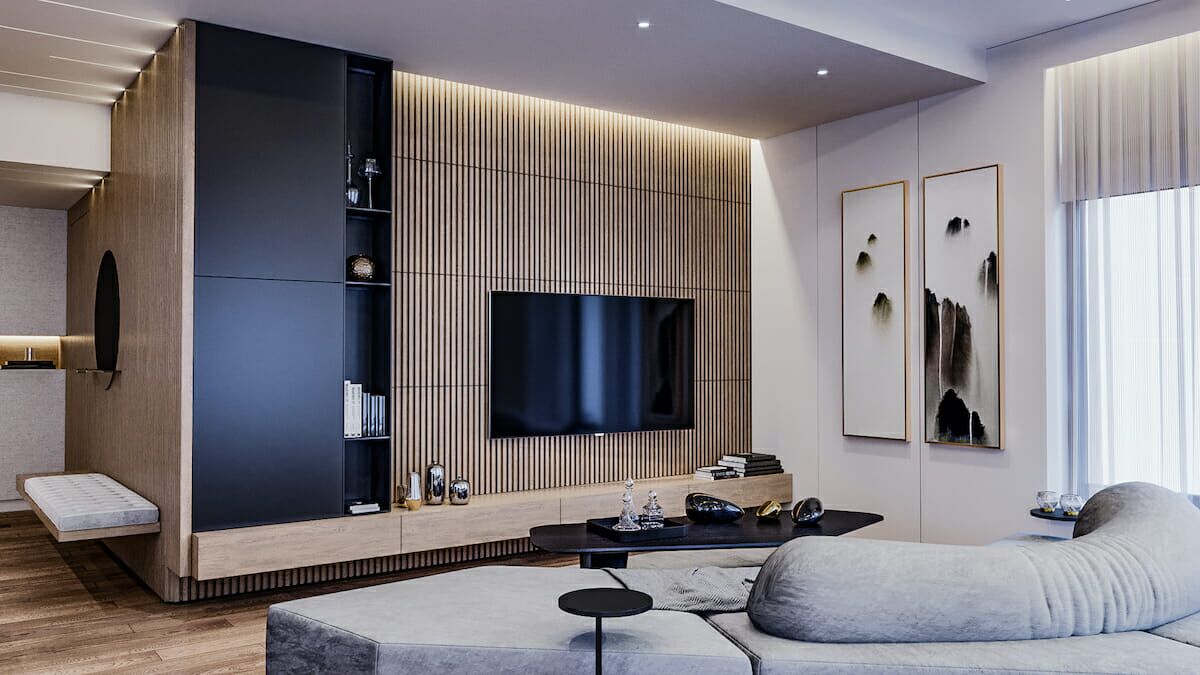
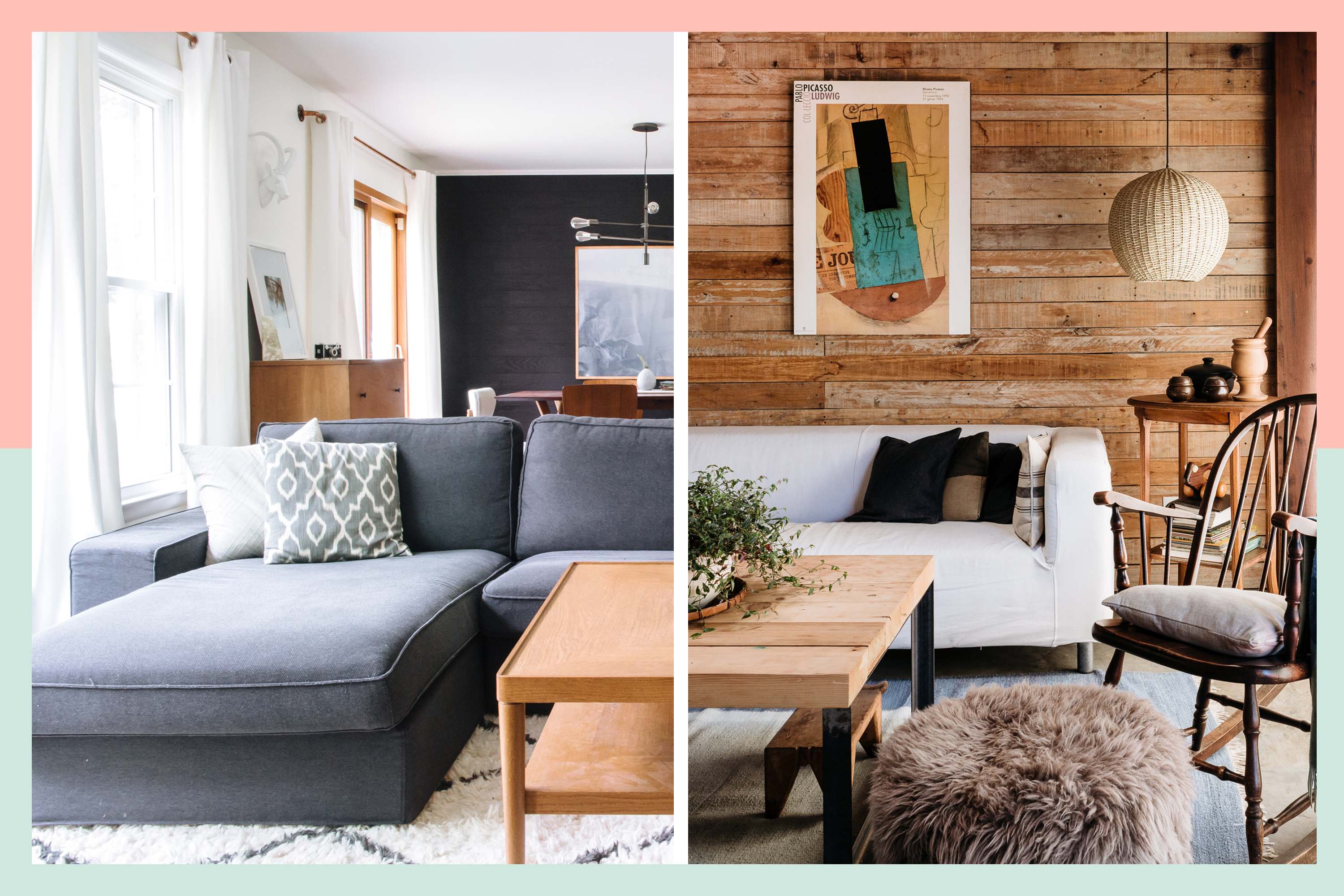

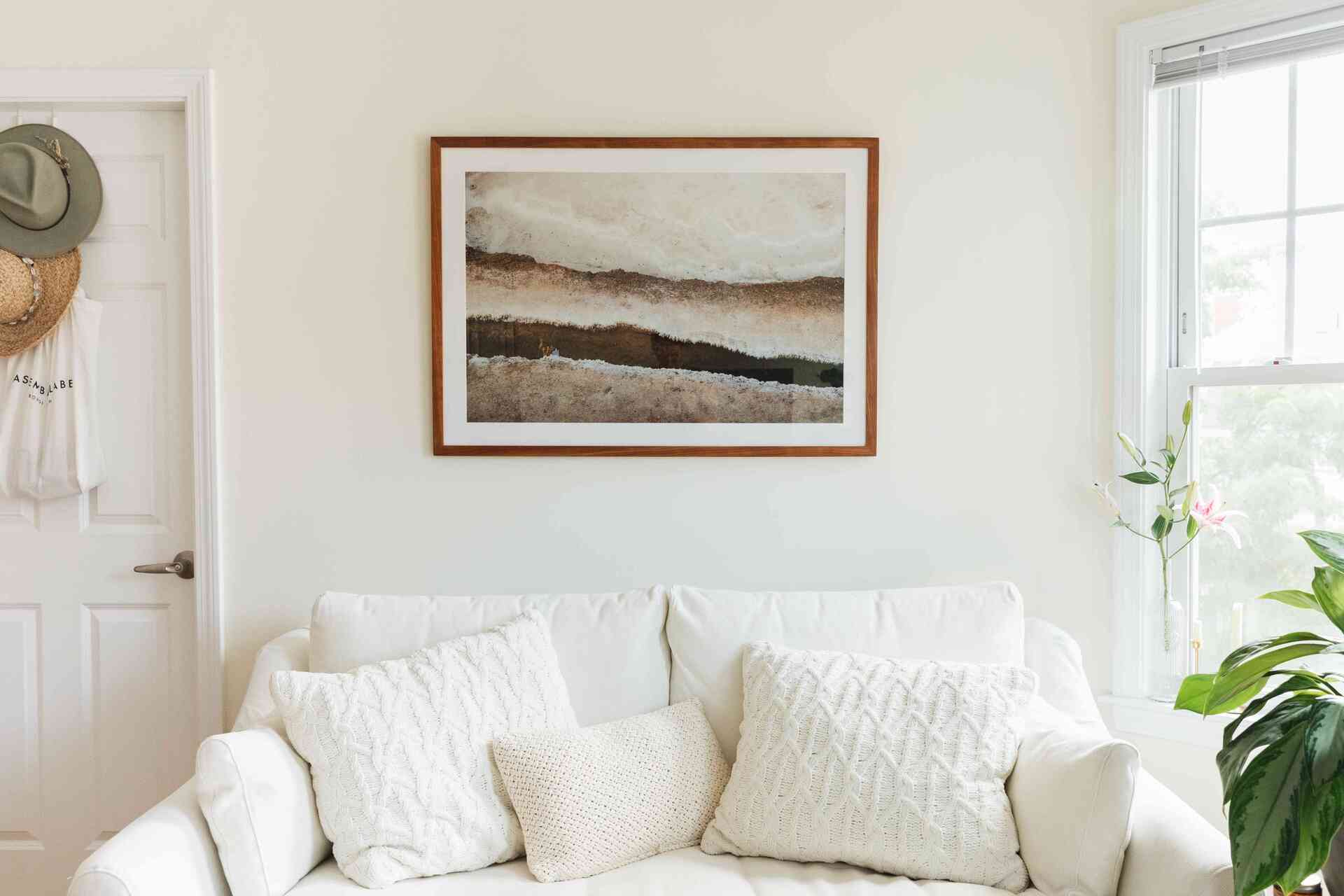



0 thoughts on “How To Learn About Interior Design”